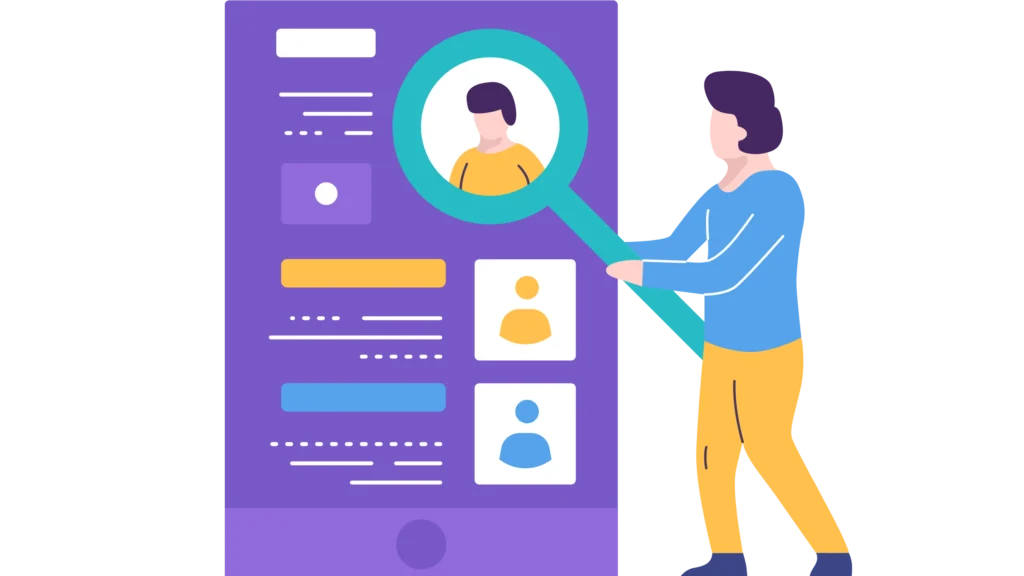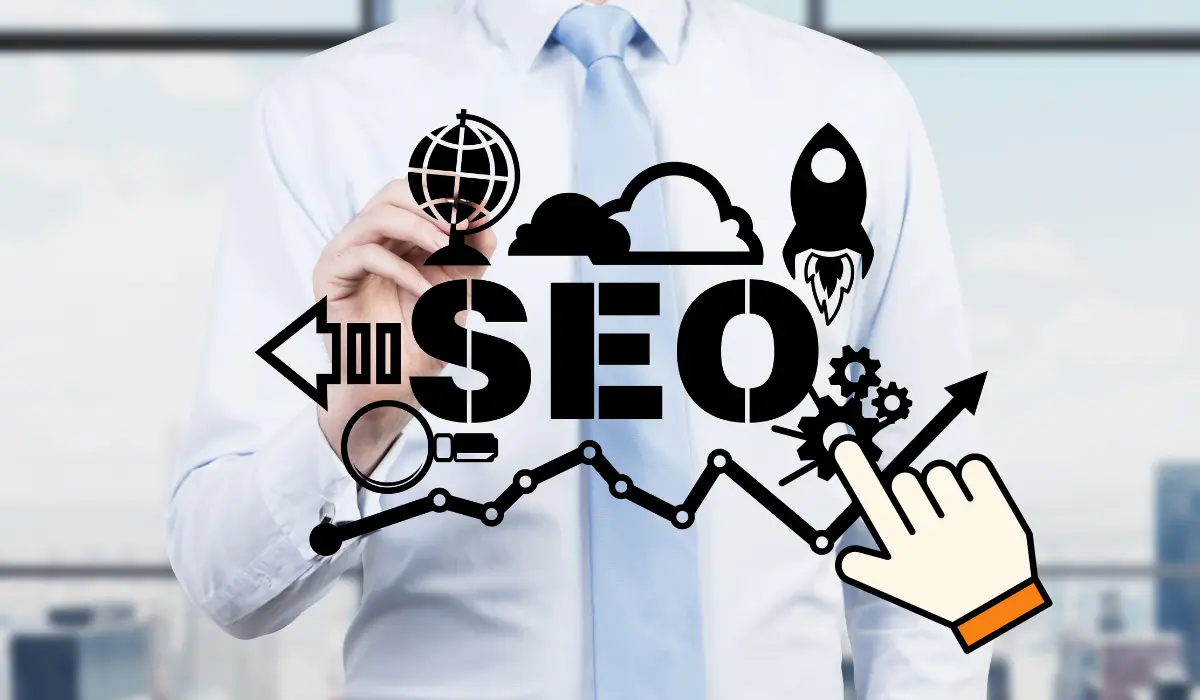Master On-Page SEO Techniques for Digital Marketing
It is true; the applicability of On-Page SEO techniques for digital marketing will empower you to increase visibility and ranking in SERPs.
And finally, here’s the ultimate SEO strategy that may serve as your secret weapon in the competitive landscapes of online contexts.
The well-crafted guide deals with everything to be known for making web pages effective and engaging while optimized for search engines.
What is the On-Page SEO Techniques for Digital Marketing?

On-page SEO refers to all the various tactics and on-page SEO techniques for digital marketing directly applied within your website to enhance your site’s ranking by search engines.
Some techniques include optimizing your content, HTML source code, images, and overall user experience.
The ultimate goal is for search engines to easily understand your content and its relevance to users’ searches.
By leveraging on-page elements effectively, you significantly increase your chances of being discovered by potential visitors.
SEO in Digital Marketing- What is it?
SEO, which is an abbreviation for Search Engine Optimization, is the process involved in digital marketing to bring more eyeballs to a website by enhancing the position and quality rankings of the website in the results provided by search engines.
It incorporates optimization of both on-page and off-page elements to attract organic traffic. A well-implemented SEO ensures that your site comes up very high within the search results whenever users look for specific terms related to your business or the content you are publishing.
SEO importance can never be overlooked, it is a basic element of any online marketing strategy that will not fail.
Why Do You Need On-Page SEO?
Here are the important reasons for on-page SEO:
- It will allow search engines to understand the context and relevance of your content.
- The page will have improved navigation and engagement; so the bounce rate would be lower.
- The more the possibilities of getting ranked higher in SERPs, the more visibility is there.
- When you work on such criteria, you would be able to get a website that would attract visitors and retain them by offering experience value.
What is On-Page SEO Keyword Optimization?
On-page SEO keyword optimization is writing appropriate keywords organically throughout your content in such a manner that content tends to rank better and higher on the SERPs. This includes the use of keywords within your title tags and meta descriptions, headers, and body text. Keyword optimization is important because it aligns the overall content with user intent and improves discoverability.
What is On-Page Technical SEO?
On-page technical SEO optimizes technical elements of the website impacting it positively within the search engines. Site speed improvement, mobile-friendliness, structured data (schema markup), and crawl errors comprise scoring. Your technical optimization means ensuring that search engines can crawl and index your site properly.
What is an On-Page SEO Score?
The on-page SEO score is a measure of how well a given webpage aligns with the best principles of optimization on a webpage.
Diverse tools calculate and evaluate parameters like keyword usage, optimization in HTML tags, internal linking structure, and the quality of content as a whole giving you a score that will help you understand where a change needs to be made.
This score can help you pick up those weaknesses in your strategy.
How to Analyse On-Page SEO?
To analyze the on-page SEO effectively,
Use Tools: Use free tools such as Google Search Console or Ubersuggest to learn more about performance metrics.
Check Quality of Content: Check whether the content is answering the users’ queries efficiently.
HTML Tags: Ensure title tags and meta descriptions are all optimized with pertinent keywords.
Evaluate User Experience: Make sure your site is fast and, therefore, mobile-friendly using some such tools as GTmetrix or Google’s Mobile-Friendly Test.
Regular analysis will prompt you to alter the course of action based on available performance data.
What is On-page SEO, and Why Is It Beneficial?
On-page SEO constitutes all optimization strategies applied directly upon a webpage to better the ranking in search engine results. The benefits of on-page SEO include:
- Improving SERPs Visibility
- Easier user experience translation into higher engagement
- More organic traffic
- A deeper understanding of user intent through targeted content
These benefits point out that it is worth spending time and resources on a meaningful strategy for on-page activities.
What Is the Primary Objective of On-Page SEO?
The primary goal of on-page SEO is the optimization of separate web pages to rank better in search engines without compromising the user’s needs and still providing valued information.
Consequently, businesses can gain more organic traffic that will have a better chance of converting into customers. This goal will direct the overall strategy.
On-Page SEO Techniques Strategies
Creating High-Quality Content
This is the heart of any website: it is its content. It attracts and retains visitors. Here is how to ensure that your content is of exceptional quality.
Keyword Research
Use Google Keyword Planner or SEMrush for proper keyword research. First, you would need to find the most relevant keywords for your target audience.
Then mix short-tail with long-tail keywords so that there are diverse search intents included in the content.
Content Relevance
Relevance to the needs and interests of your audience is expected. Tackle the heart questions, solve their problems, and provide insightful information.
This will give you a better chance of having them share or link your content, which will positively affect your SEO.
Optimize Title Tags
One of the most important elements both users and search engines pay attention to is title tags. Keep it concise: 50-60 characters;
include your primary keyword; make it attractive enough to be clicked; a well-written title tag is the tone for the whole page.
Successful Meta Descriptions
Meta descriptions describe your page’s content in a few words. Because it doesn’t directly impact ranking, a well-written meta description may improve CTR. Target 150–160 characters to highlight your main keyword in an interesting way to possible visitors.
URL Structure
A clean and simple URL structure supports both user experience and the understanding of search engines. Use hyphens to separate words but do not use special characters, and URLs should not be very long but descriptive. Good URL structure supports both usability as well as indexing.
Header Tags (H1, H2, H3, H4)
Headings help you to structure your content and also to read:
H1: This is the title of the page. Once more, this must contain the main keyword.
H2: Main topics or subheadings of the article.
H3/H4: Subtopics which explain the H2 topics.
This structure not only helps users but also makes search engines understand the flow of your writing.
Linking to Internally Created Content
Internal linking builds links between relevant pages on your website; this provides a natural flow of information. It supports exploration by more pages and distributes the link equity on your website. Use descriptive anchor text for clarity; this will improve both user experience and crawlability in search engines.
Image Optimization
Images add aesthetic value but also increase page loading time unless optimized.
Alt Text
Alt text is the description for images, which helps search engines to know what’s in the picture and helps people who are blind or have a vision impairment.
Use enough keywords for clarity but not so long -this makes it accessible for access and crawlers.
Picture size as well as format
Compress your pictures to a minimum file size without compromising on quality by using formats like WebP or JPEG XR. Optimised images will be more beneficial for speeds.
Mobile usability
With every second user accessing websites through mobile devices, your site must be a mobile-friendly website. Apply responsive design techniques so your site is highly adaptive across various screen sizes; thereby, the user experience increases across different devices.
Page Speed
Slow-loading websites frustrate visitors; this is one of the high chances for bounce rates.
File compression
Using Content Delivery Network (CDN)
Very few large scripts or plugins
It should load in less than three seconds for maximum retention of users, and better-performing sites generally also rank better in SERPs.
UX
A good user experience makes visitors want to stay longer on your site, exploring more of its content:
Make it easy to navigate by keeping clear menus
Keep it clean to draw attention to what’s important.
Best content addresses user needs with the greatest value.
Focusing on UX isn’t just going to drive engagement but rather serve them over the long term.
Schema Markup
Schema markup extends what search engines can take away from your content through structured data, giving added context. Adding schema might mean rich snippets in the SERPs, and that was fantastic for visibility and click-through; it helped users know what they might find by clicking through.
Common On-Page SEO Mistakes to Avoid
To get the best out of your on-page SEO techniques for digital marketing, avoid common mistakes
Keyword Stuffing: Excessive use of keywords can lead to penalties from search engines.
Duplicate Content: Reusing content from other sites reduces uniqueness; always aim for original material.
Ignoring Mobile Optimization: Overlooking mobile users means missing out on a growing audience—mobile optimization is now essential.
Avoiding these mistakes ensures alignment with best practices, making your efforts to reach target audiences more effective.
Conclusion
Improving the on-page SEO of your website is a process that demands commitment and strategic planning.
Using the right on-page SEO techniques for digital marketing, such as affiliate marketing or even game development, can help increase the visibility of your site and attract people who will care about your business.
These methods will not only place you on top of the SERPs but also provide a superior experience to the visitors of your site, leading to success in digital marketing work through affiliate marketing or game development projects.
Instead, you’ll position yourself ahead of the pack by continually building and refining strategies based on analytics data and the natural flux of digital marketing trends.
With this ever-changing landscape, your online affiliate marketing business or game development projects will thrive because you won’t be easily overlooked in today’s competitive market.
During this journey to mastering on-page SEO techniques for digital marketing, sustained effort combined with strategic insights will bring enduring growth in traffic and conversions—and ultimately, fulfil the dreams of financial freedom through digital pathways.
6. FAQs
1. What is the most important on-page SEO factor?
The key to good SEO on the page is creating great content that’s interesting and related, which helps draw and keep visitors. This is crucial for on-page SEO in digital marketing.
2. How often should I update my content for SEO purposes?
Keeping your content fresh and up-to-date can help you stay on top and even boost your rankings. Try to go through and refresh your content at least every six months.
3. Can I over-optimize my website?
Sure, going overboard with optimization can get you in trouble. Try not to cram too many keywords, or too many links inside your site, and use the same clickable text too much.
4. How does mobile-friendliness affect SEO?
Being easy to use on mobile is important for ranking high. A site that’s easy to use on phones makes it better for users, which can help it get higher in the search results.
5. What tools can help with on-page SEO?
Tools like Google Analytics, SEMrush, and Yoast SEO can help you make better your On-Page SEO in digital marketing. They give you tips, keep an eye on how you’re doing, and suggest ways to get better.



